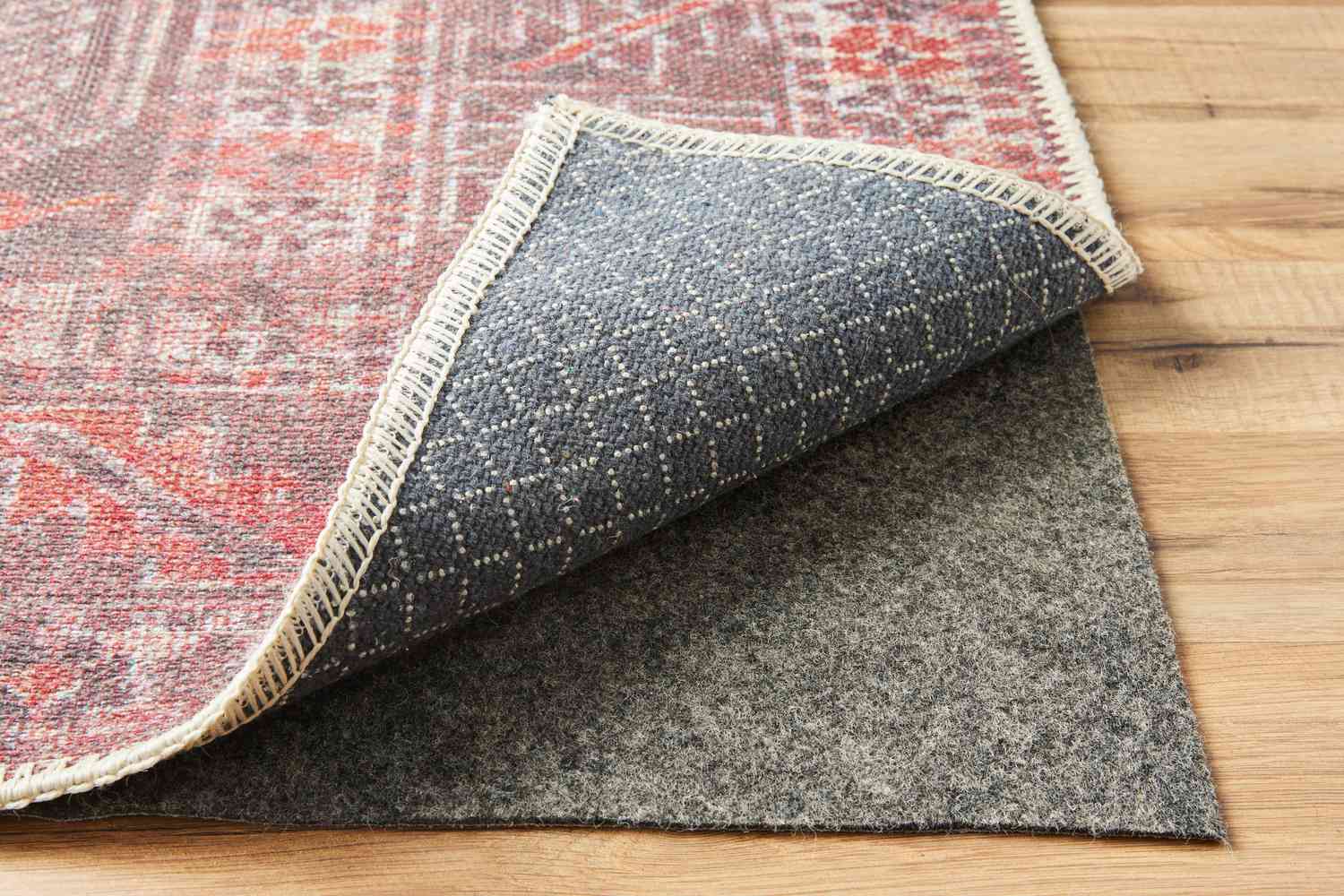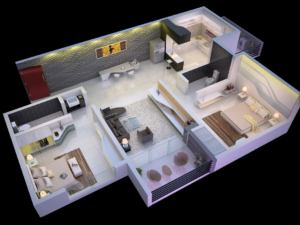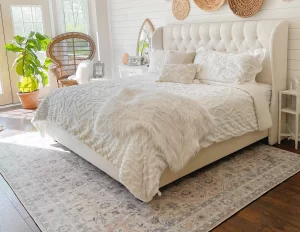
Anchoring Elegance: A Comprehensive Guide on How to Keep Rugs from Sliding on Carpet
Introduction
Rugs add warmth, comfort, and a touch of style to our living spaces. However, when placed on carpeted floors, they often face the challenge of sliding and shifting. The constant movement can be not only frustrating but also a potential safety hazard. In this detailed guide, we’ll explore effective solutions and practical tips on how to keep rugs from sliding on carpet, ensuring your floors remain stylish, safe, and anchored in place.
Understanding the Challenge
The Carpet-Rug Dilemma
Carpeted floors provide a soft and cozy foundation, but they present a unique challenge when it comes to keeping rugs in place. The smooth surface of the carpet allows rugs to slide, creating an inconvenience for homeowners. However, with the right strategies, this issue can be effectively addressed.
1. Rug Pads: The Foundation of Stability
Investing in Quality
Rug pads are the unsung heroes in the battle against sliding rugs. These underlays provide an additional layer of grip between the rug and the carpet, preventing unwanted movement. Opt for high-quality rug pads that are specifically designed for use on carpets to ensure optimal effectiveness.
Choosing the Right Material
Rug pads come in various materials, including rubber, felt, and combination pads. Rubberized pads are excellent for providing a strong grip, while felt pads add extra cushioning. Consider the balance between grip and cushioning based on your preferences and the specific requirements of the room.
2. Double-Sided Carpet Tape: A Tactical Solution
Securing the Edges
Double-sided carpet tape is a strategic solution for keeping rugs anchored in place. Apply the tape along the edges of the rug, ensuring it adheres firmly to the carpet underneath. This creates a secure boundary that resists sliding, particularly at high-traffic areas.
Easy Application and Removal
One of the advantages of double-sided carpet tape is its ease of application and removal. It provides a temporary yet effective fix, making it a practical choice for those who may want to rearrange or clean their rugs periodically.
3. Velcro Strips: Precision in Placement
Tailored Grip
Velcro strips offer a precise and customizable solution for securing rugs on carpet. Attach one side of the Velcro strip to the underside of the rug and the corresponding side to the carpet. This method provides a tailored grip, preventing sliding without the need for adhesives.
Ideal for Small Rugs
Velcro strips are particularly effective for small rugs or runners. They offer a discreet and versatile option, allowing you to secure rugs in specific areas without altering the entire rug pad.
4. Rug Corners: Staying Grounded
DIY Corner Weights
An inventive and budget-friendly solution involves using simple household items as corner weights. Attach small, heavy objects, such as bookends or decorative weights, to each corner of the rug. This DIY approach adds weight to the corners, helping to anchor the rug in place.
Fabric Fasteners for Precision
For a more refined method, consider using fabric fasteners, such as hook-and-loop strips. Attach one side to the rug’s corners and the corresponding side to the carpet. This provides a secure and adjustable solution for preventing corners from curling or lifting.
5. Silicone Caulk: Grip Without Residue
Creating a Nonslip Surface
Silicone caulk offers a unique solution by creating a nonslip surface between the rug and the carpet. Apply thin lines or dots of silicone caulk to the underside of the rug, allowing it to dry completely. The cured silicone provides grip without leaving residue on the carpet.
Suitable for Various Rug Backings
Silicone caulk is suitable for use with various rug backings, including rubber and latex. It offers a durable and long-lasting solution, ensuring that the rug remains firmly in place over time.
6. Heavy Furniture: Utilizing Weight
Natural Anchors
Strategic placement of heavy furniture on the edges of the rug can act as natural anchors. The weight of the furniture helps keep the rug in place, particularly in areas where sliding is a common issue. This method is effective for larger rugs in living rooms or dining areas.
Consideration for Floor Protection
When using heavy furniture to anchor rugs, consider using furniture pads underneath to protect both the rug and the underlying carpet. This prevents potential damage caused by the weight of the furniture over time.
7. Rug Gripper or Non-Slip Underlay: Tailored Solutions
Customized for Rug Size
Rug grippers or non-slip underlays are designed to fit specific rug sizes, providing a tailored solution for preventing sliding. These underlays often feature a grippy surface on one side and a non-slip material on the other, ensuring stability on both the rug and the carpet.
Ideal for Area Rugs
This solution is particularly effective for area rugs that may cover a significant portion of the carpet. The underlay’s custom fit enhances its effectiveness, providing a secure foundation for the entire rug.
8. Hook-and-Eye Fasteners: Adjustable Security
Versatile and Adjustable
Hook-and-eye fasteners, commonly used in clothing and accessories, offer a versatile and adjustable solution for securing rugs on carpet. Attach the hook side to the rug’s underside and the corresponding eye side to the carpet. This method allows for easy adjustments and removal.
Suitable for Various Rug Materials
Hook-and-eye fasteners are suitable for use with various rug materials, including fabric, wool, or synthetic fibers. The adjustable nature of this solution makes it adaptable to different rug sizes and weights.
Frequently Asked Questions
1. Do rug pads damage carpet?
High-quality rug pads specifically designed for use on carpets are unlikely to damage the carpet. However, it’s essential to choose a pad with materials that are safe for your specific carpet type.
2. Can I use rug grippers on all types of rugs?
Rug grippers or non-slip underlays are suitable for use with most types of rugs, including area rugs and runners. Ensure that the gripper is compatible with the specific material of your rug for optimal effectiveness.
3. Will double-sided carpet tape leave residue on the carpet?
While some double-sided carpet tapes may leave residue, choosing a high-quality tape designed for carpet use reduces the likelihood of residue. Additionally, removing the tape carefully and following manufacturer recommendations minimizes any potential residue.
4. How often should I replace rug pads?
The lifespan of a rug pad depends on factors such as material quality, usage, and maintenance. High-quality rug pads can last several years, but periodic inspection for wear and tear is advisable. Replace rug pads when they show signs of deterioration.
5. Can I use silicone caulk on all types of rugs?
Silicone caulk is suitable for use with various rug backings, including rubber and latex. However, it’s essential to test a small, inconspicuous area first to ensure compatibility and avoid potential damage to the rug.
6. Will heavy furniture damage the rug or carpet?
Heavy furniture can potentially cause indentations in rugs or carpets over time. To prevent damage, consider rotating the placement of furniture periodically or using furniture pads underneath heavy pieces.
7. Are rug grippers reusable?
Many rug grippers and non-slip underlays are reusable. However, the effectiveness of the gripper may diminish over time, and replacement may be necessary, especially if the adhesive properties weaken.
8. Can I use hook-and-eye fasteners on antique rugs?
Using hook-and-eye fasteners on antique rugs should be approached with caution. The fasteners may be suitable for certain types of antique rugs, but it’s advisable to consult with a rug preservation expert to ensure the safety of the rug.
9. Can I wash rugs with silicone caulk applied to the underside?
Washing rugs with silicone caulk applied to the underside may compromise the effectiveness of the caulk. Check the manufacturer’s recommendations for the specific silicone caulk used and follow their guidelines for cleaning.
10. How do I choose the right rug pad thickness?
The right rug pad thickness depends on factors such as the rug’s pile height, the desired level of cushioning, and the type of flooring underneath. Thicker pads provide more cushioning, while thinner pads work well for low-profile rugs.
Conclusion
Keeping rugs from sliding on carpet is a common challenge, but with the right strategies, you can enjoy the aesthetic and practical benefits of rugs without the inconvenience of constant movement. Whether you opt for rug pads, double-sided tape, or innovative solutions like silicone caulk or hook-and-eye fasteners, anchoring your rugs in place contributes to a safer and more enjoyable living environment. Experiment with different methods to find the one that best suits your rug type, carpet, and personal preferences. Anchored elegance awaits as you transform your space into a harmonious blend of comfort and style.


